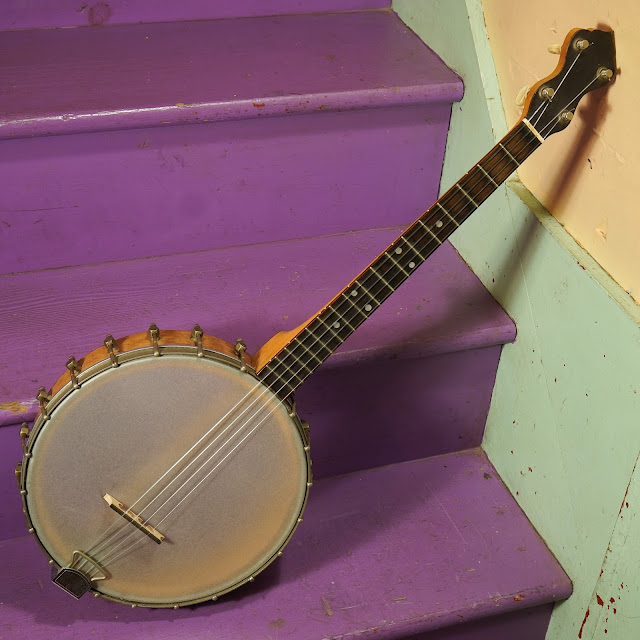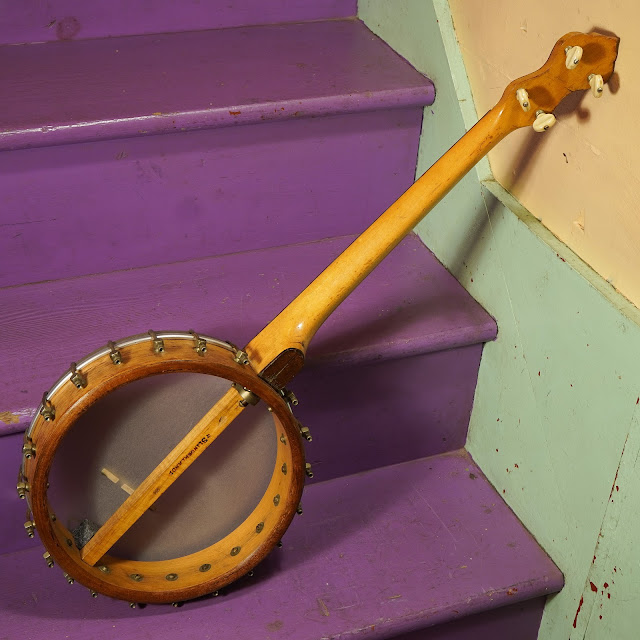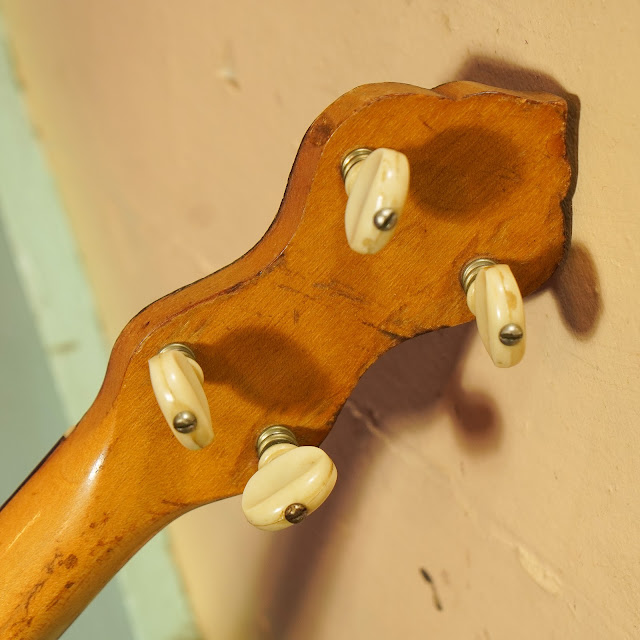1920s Slingerland Baritone Banjo Ukulele Conversion
A customer of mine found this banjo a while back and it's a pretty typical mid-'20s, student-level instrument. I'm pretty sure these Slingerland-branded instruments were made by Regal for the company and it's a plain-Jane creation with a ply-maple rim, maple neck, ebonized fretboard, and simple "hoop" tonering.
I leveled/dressed the frets, tightened-up the joints, fit a Remo Renaissance head, and then set it up for him as a baritone ukulele rather than a tenor banjo. While these instruments sound decent as "normal" tenors, they're a lot more interesting in this capacity and the original friction (rather than geared) pegs make a lot more sense when tuning-up nylon or fluorocarbon (as in this case) strings.
I use D'Addarios EJ99TLG (low G fluorocarbon) tenor uke set to get an all-plain baritone stringing (DGBE) on tenor-banjo/guitar-scale instruments like this.
Anyhow, said owner recently picked-up a quite fancy version of this same idea and so is letting this instrument and another one (already sold) go. It's been stable in service since I've known it and has a good, old-timey sort-of vibe to its sound.
Repairs included: (previously) a fret level/dress, cleaning, new head, new bridge, and setup. Currently just a quick setup.
Rim wood: ply maple
Tonering: simple hoop
Bridge: maple/ebony
Fretboard: ebonized maple
Neck wood: maple
Action height at 12th fret: 1/16" overall (fast)
String gauges: D'Addario low G tenor ukulele fluorocarbon (EJ99TLG set)
Neck shape: medium C/V
Board radius: flat
Neck relief: straight
Fret style: lower/smaller
Scale length: 20 7/8"
Nut width: 1 3/16"
Head diameter: 10 3/4"
Depth overall at rim: 2 3/4"
Weight: 3 lbs 12 oz
Condition notes: it shows plenty of wear and tear via mid-size scratches, scuffs, and dings throughout. The heel cap has a hairline crack in it (repaired). Structurally it's good to go and all the work is done and it plays spot-on. The rim hardware is all original and it's nice to have the downpressure bar on the tailpiece still extant (a lot of these fall off). The head, side dots, and bridge are replacements but otherwise the banjo is original throughout.















Comments